The Little Boatman by Vikas Datta (Dehli, India).
Originating in the Himalayas, the river winds its way down the mountains through the northern plains of India.
A few couples dressed in their wedding finery were being photographed by over-enthusiastic wedding photographers.
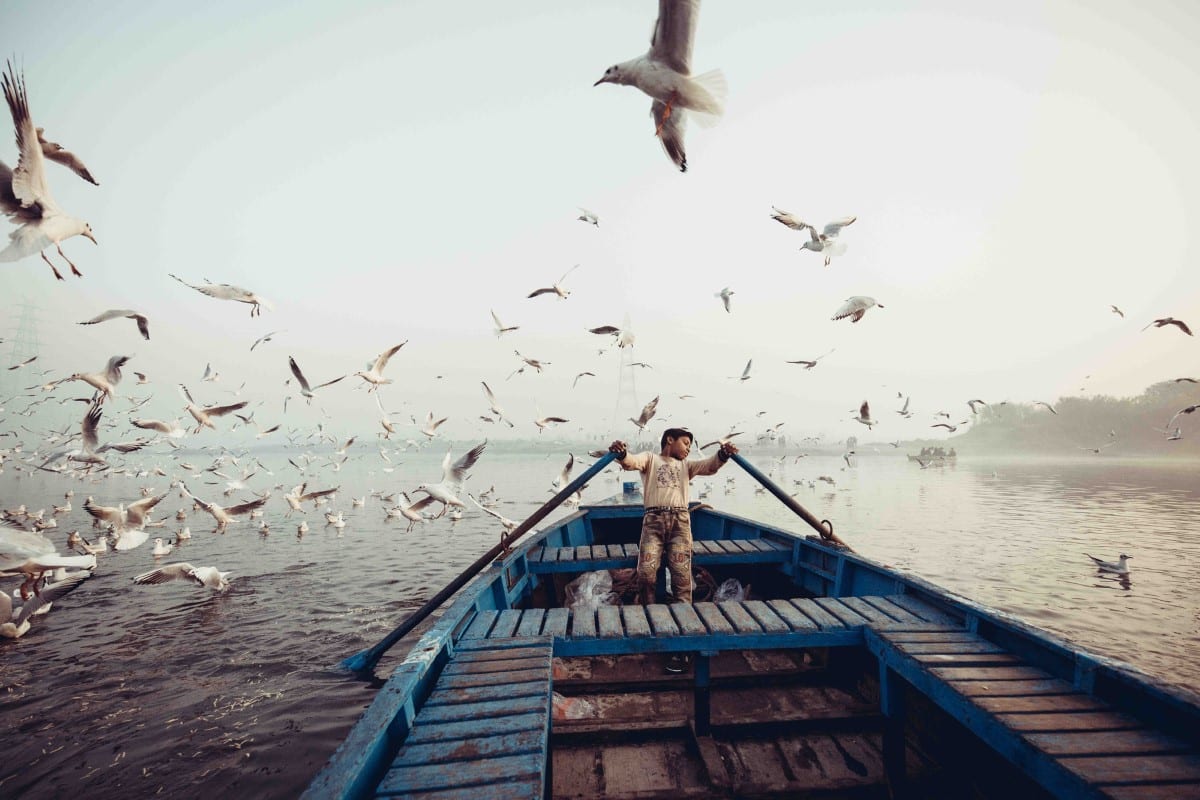
“The Little Boatman” by Vikas Datta (Dehli, India). First Place.“It was still dark when I reached the banks of the Yamuna River in North Delhi to see for myself a strange spectacle of newlyweds and soon-to-be-married couples arranging wedding photoshoots on this stinking cesspool of what was once a river. Originating in the Himalayas, the river winds its way down the mountains through the northern plains of India. The river, which is a life source for millions of people, the river on whose banks the Taj Mahal was built…. that river enters Delhi through the Wazirabad barrage, to die. As I walked down the stairs of the embankment, I could smell the stink of sewage and see the garbage and toxic waste floating in the river. A few couples dressed in their wedding finery were being photographed by over-enthusiastic wedding photographers. A boy sitting in one of the row boats, not more than twelve or thirteen, beckoned me towards him. I can take you, he said, only five hundred rupees. I stepped into his boat, and we set off down the river. He pointed to a plastic bag and said, “Take that for the birds. Fifty rupees only.” I opened the bag, grabbed a handful of the salted fried treats, and flung it towards the birds. The little boatman stood up and heaved on the oars hard, “Full speed ahead,” he shouted. As the sun rose, the golden light brightened the fog on the river. Couples in other boats held hands and their breath as the cameras clicked and captured their special moment of new beginnings. Meanwhile, the boat sliced through the dark, dead river, with seagulls flying alongside.”
I can take you, he said, only five hundred rupees.
I stepped into his boat, and we set off down the river.
He pointed to a plastic bag and said, Take that for the birds.
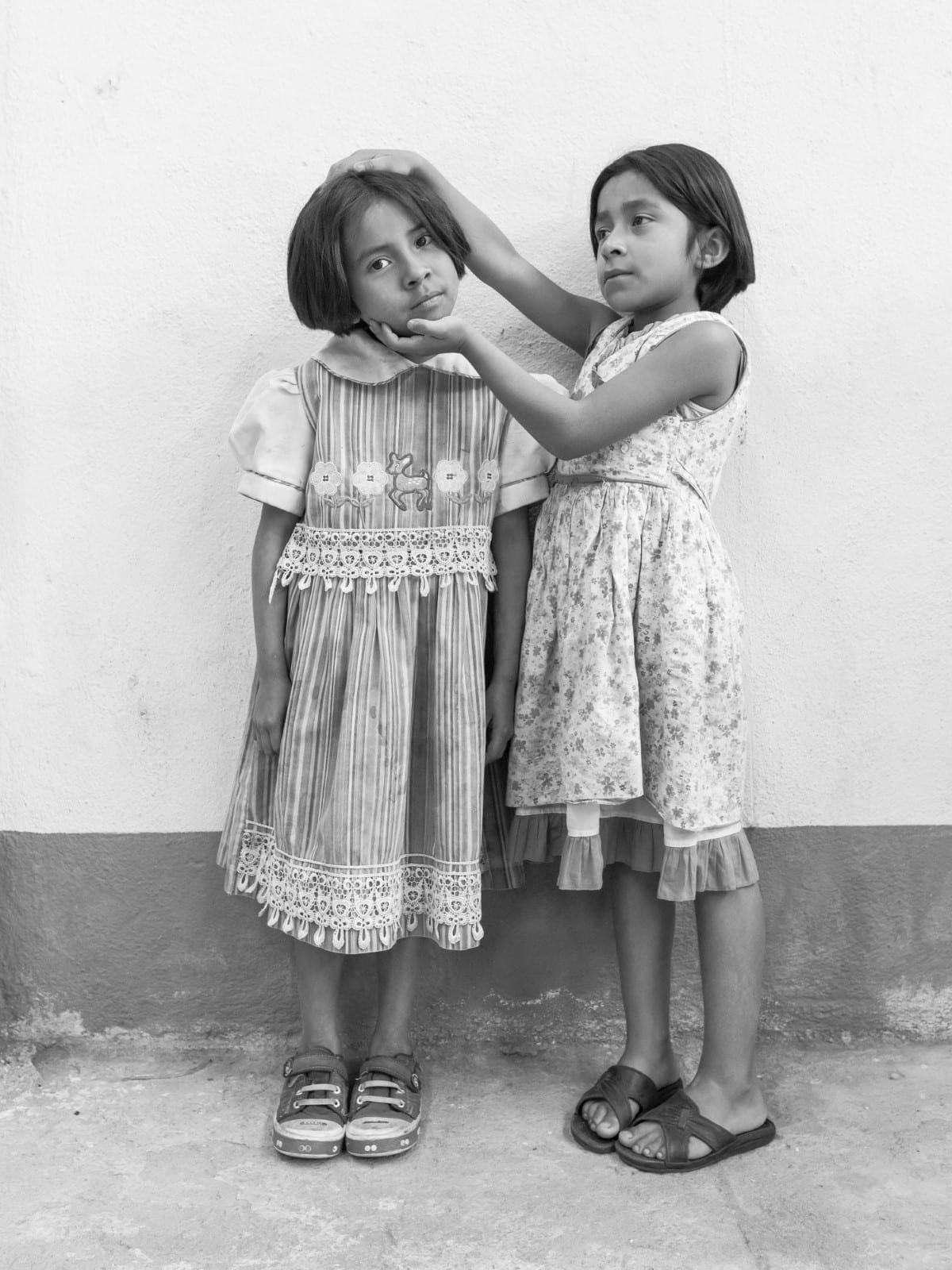
“The Photographer’s Assistant” by Alejandra Lopez Zaballa (Oaxaca, Mexico). Second Place.“This image is part of a long project (8 years now) I did in a Girls’ caring home in Oaxaca (south of Mexico). The aim was to show and give voice to “orphan” children. To continue raising awareness about a social problem that has existed forever but, as a society, we seem not to have resolved quite properly. I went so many times to this place that early on, it became natural for the girls that I would be there, quiet, taking photos and later on playing with them. The fact that for them I was part of the caring home made them feel comfortable so that sometimes they “created” spontaneously some images, like this one. The girls were just talking, and I was going to take a photo of them when the one on the right decided to be like the “stylist” of the one on the left and made her pose. I loved how naturally and gracefully she was moving her face. I loved that even though they didn’t pose for the project, they felt they wanted to do it and help in their own way. It was pure chemistry and connection without talking.”
The little boatman stood up and heaved on the oars hard, Full speed ahead, he shouted.
As the sun rose, the golden light brightened the fog on the river.
Meanwhile, the boat sliced through the dark, dead river, with seagulls flying alongside.
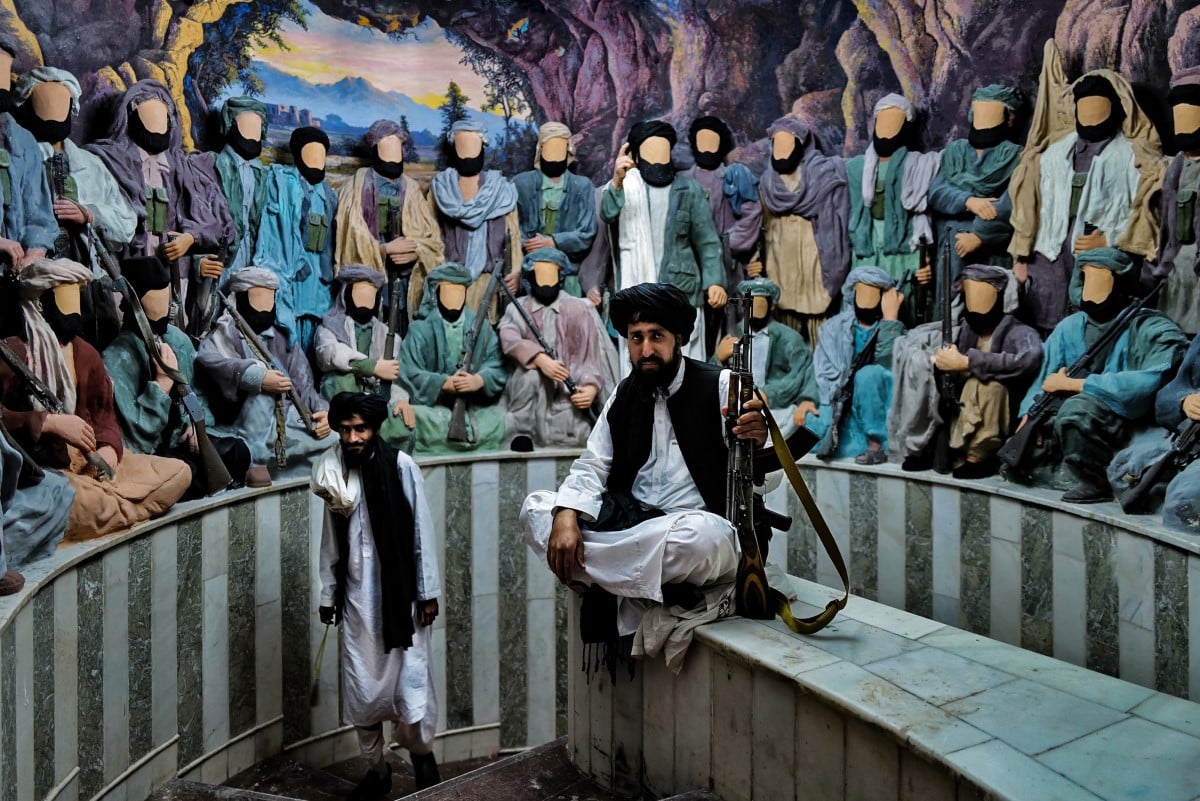
“Stairway Standoff” by Laurin Strele (Herat, Afghanistan). Third Place.“In Herat jihad-museum, there’s a staircase lined with lifelike puppets of Mujahideen fighters. No faces, just silent soldiers. A Taliban guy climbs up. At the center, another Taliban sits, gun in hand, looking straight at the camera. I stood at the top of the staircase, looking down. I snapped a picture of what lay below. The quiet figures, both puppets and people, seemed to tell a story without words. It’s a photo of history, where puppets and people blur the line between reality and representation. Each figure, whether carved or flesh, weaves a thread in Afghanistan’s narrative.”
Thanks to its monthly photo contests,The Independent Photographerhelps talented creatives showcase their work to the world.
The most powerful storytelling is world-making, shared Sobecki.
In the little boatmans expression is a kind of quiet, daily heroism that we too often overlook.
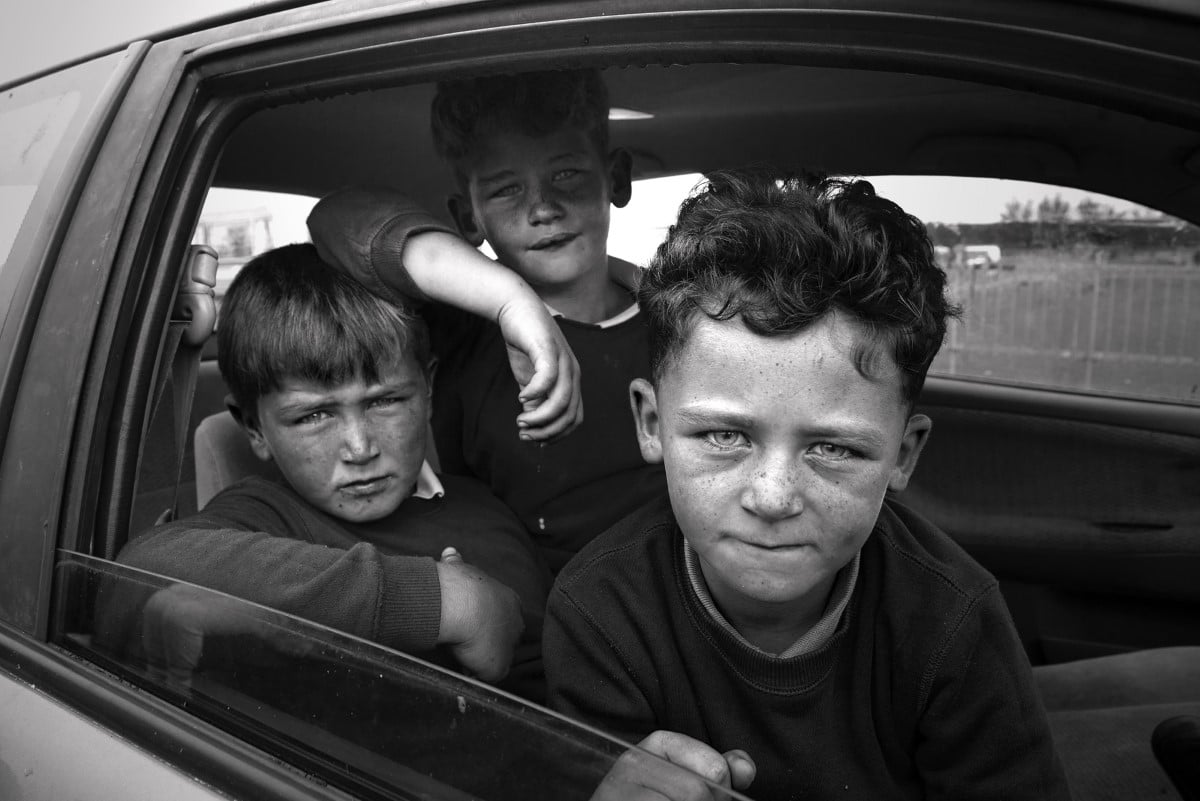
“The Car Boys” by Rebecca Moseman (Carrowbrowne Halting Site, Galway, Ireland). Finalist.“Billy, Steven, and Paddy, three Irish Traveler. Boys use an abandoned car as their playground. The boys have no natural areas to play, so they display boredom, frustration, and aggression by destroying the car. The Carrow Browne halting site, a rat-infested site, is located on the outskirts of Galway City next to a waste management site. Although the site was intended to be temporary, it has become their permanent living area. The Irish Travellers are a proud and reclusive people, maintaining a culture and traditions whose origins are lost in time. In the fall of 2017, I had the opportunity to be among them under the supervision of a fellow photographer who provided access to their world and allowed me to photograph their lives. This series of images reflects my personal interactions with the Travelers I was fortunate to connect with.”
The diversity of these entries proves that there are many ways to create a strong narrative.
Entries are open until the end of March 2024, with $2,000 in cash going to the winners.
Here are the winners and finalists of Visual Story competition run by The Independent Photographer.
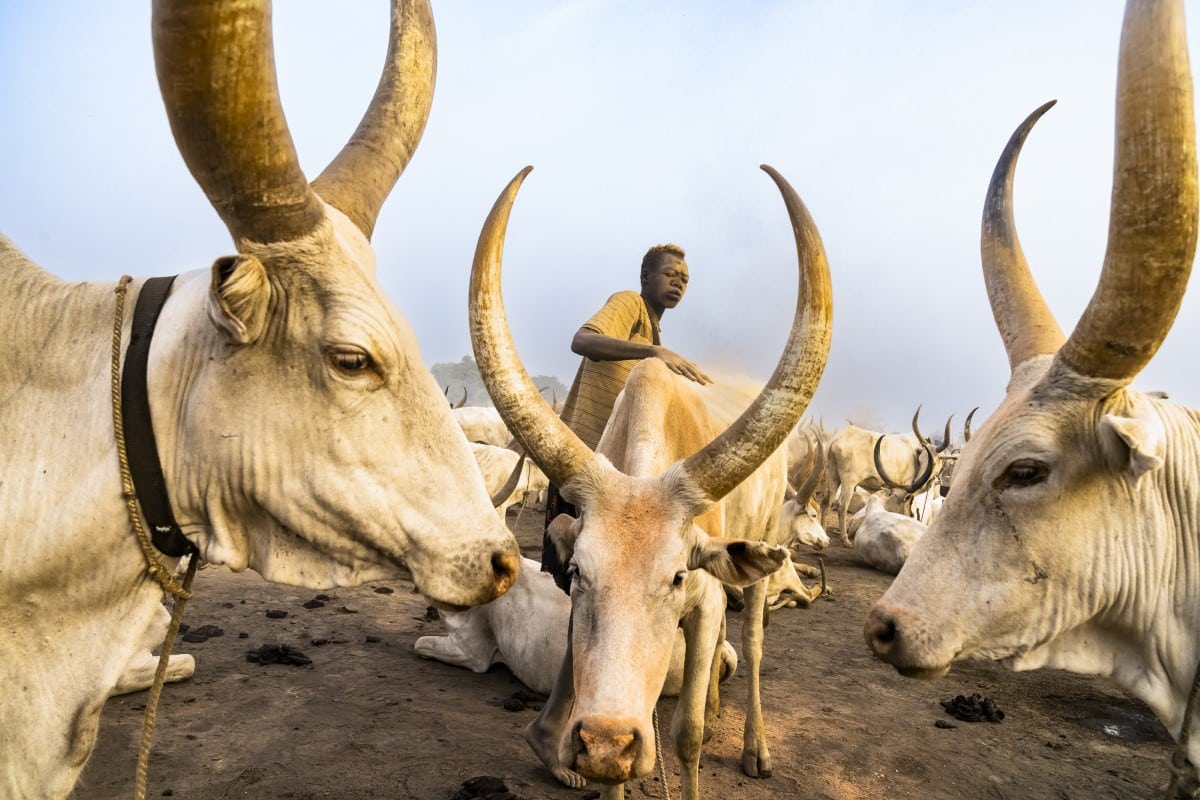
“The Mundari and their treasured cows.” by France Leclerc (South Sudan). Finalist.“Indigenous to the Nile Valley, the Mundari is a small ethnic group of roughly 100,000 people. As is the case for many other tribes in the area, everything is about the cows for the Mundari. Cattle are the Mundari’s primary source of wealth; the cows serve as a form of currency and, as such, have become a symbol of status and power. And the cows are magnificent. These Ankole-Watusi cows are gigantic and have impressive curly horns.”
The Photographers Assistant by Alejandra Lopez Zaballa (Oaxaca, Mexico).
The aim was to show and give voice to orphan children.
I loved how naturally and gracefully she was moving her face.
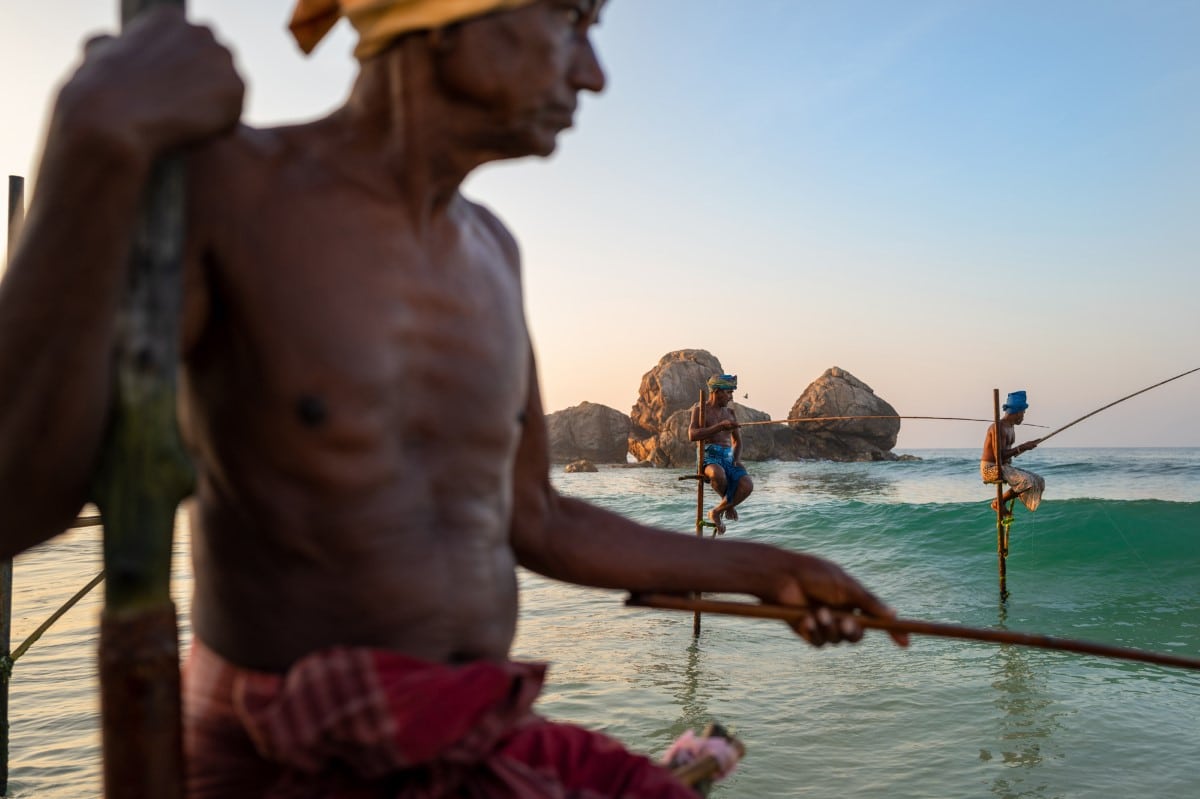
“Stilt fishermen of Weligama” by Andrea Peruzzi (Weligama, Sri Lanka). Finalist.“At the first light of dawn, when no one yet wanders along the beaches of southern Sri Lanka, some local fishermen try their hand at the fascinating and scenic fishing on stilts, which are stuck in the sand in the middle of the sea. An ancient local fishing custom, which fortunately some elderly fishermen continue to practice, and is not just a fake photographic set for tourists, as it is often possible to encounter in some locations in the country during the day.”
It was pure chemistry and connection without talking.
Stairway Standoff by Laurin Strele (Herat, Afghanistan).
Third Place.In Herat jihad-museum, theres a staircase lined with lifelike puppets of Mujahideen fighters.
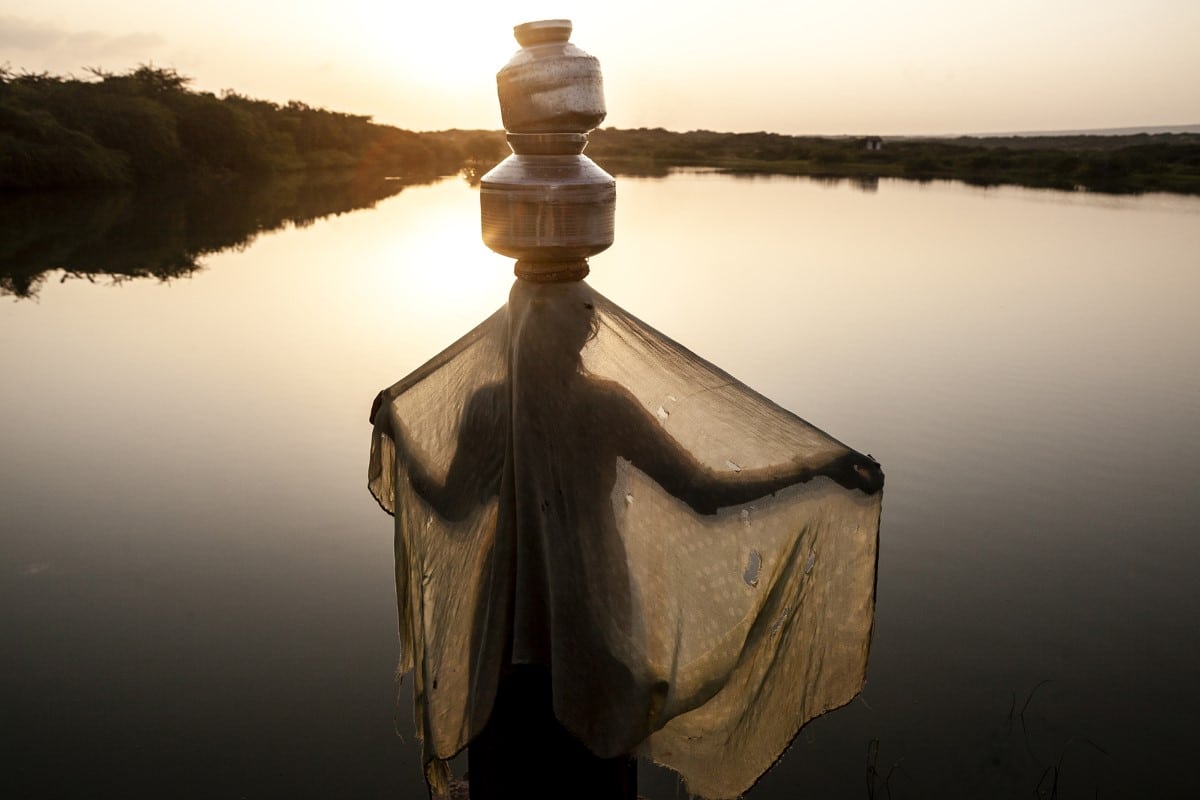
“The pursuit of water” by Eliane Band (Gujarat, India). Finalist.“In the hinterlands of Gujarat, India, lies a Rabari Community Village where I could witness the essence of a daily ritual – the arduous task of fetching and carrying water for essential needs. What truly resonated with my heart was witnessing the metamorphosis of this challenging daily activity into a serene and poetic scene. The image not only encapsulates the physical act of water collection but also serves as a poignant reflection of the community’s approach towards this daily chore – one marked by grace, beauty, and an inherent acceptance of their circumstances. This juxtaposition, caught in the frame, encapsulates the resilience and transcendent spirit of the Rabari people as they navigate the complexities of their daily lives.”
No faces, just silent soldiers.
A Taliban guy climbs up.
At the center, another Taliban sits, gun in hand, looking straight at the camera.
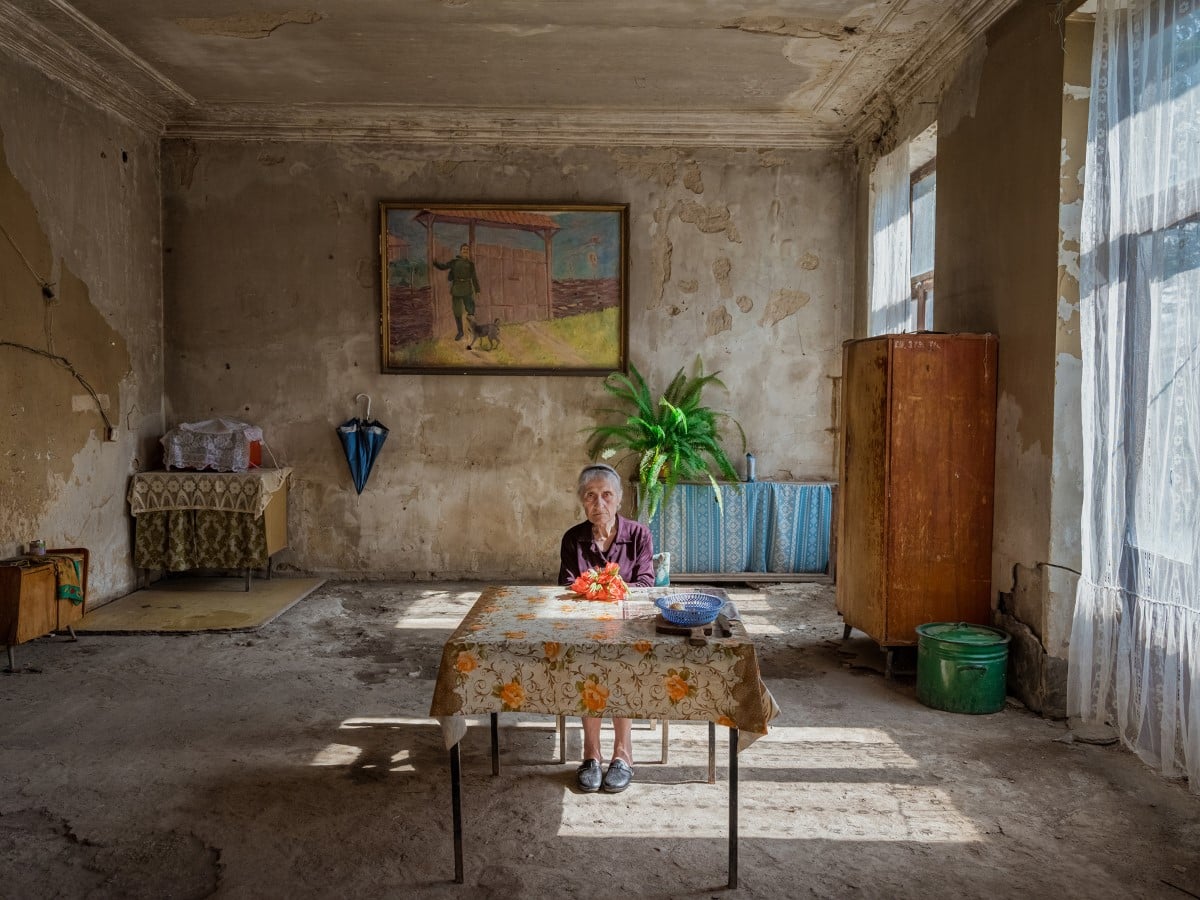
“Nameless1” by Hossein Fardinfard (Tskaltubo, Georgia). Finalist.“From the series ‘Blackout.’ Merry is one of the victims of the 1992 war in Abkhazia. Her brother and her 53-year-old husband were both murdered by Abkhazian separatist forces. With an injured leg, she escaped and hid in a forest for two weeks. After a long journey, she reached her new home in Tskaltubo. Personally, Merry and this photo symbolize hope for me.”
I stood at the top of the staircase, looking down.
I snapped a picture of what lay below.
The quiet figures, both puppets and people, seemed to tell a story without words.
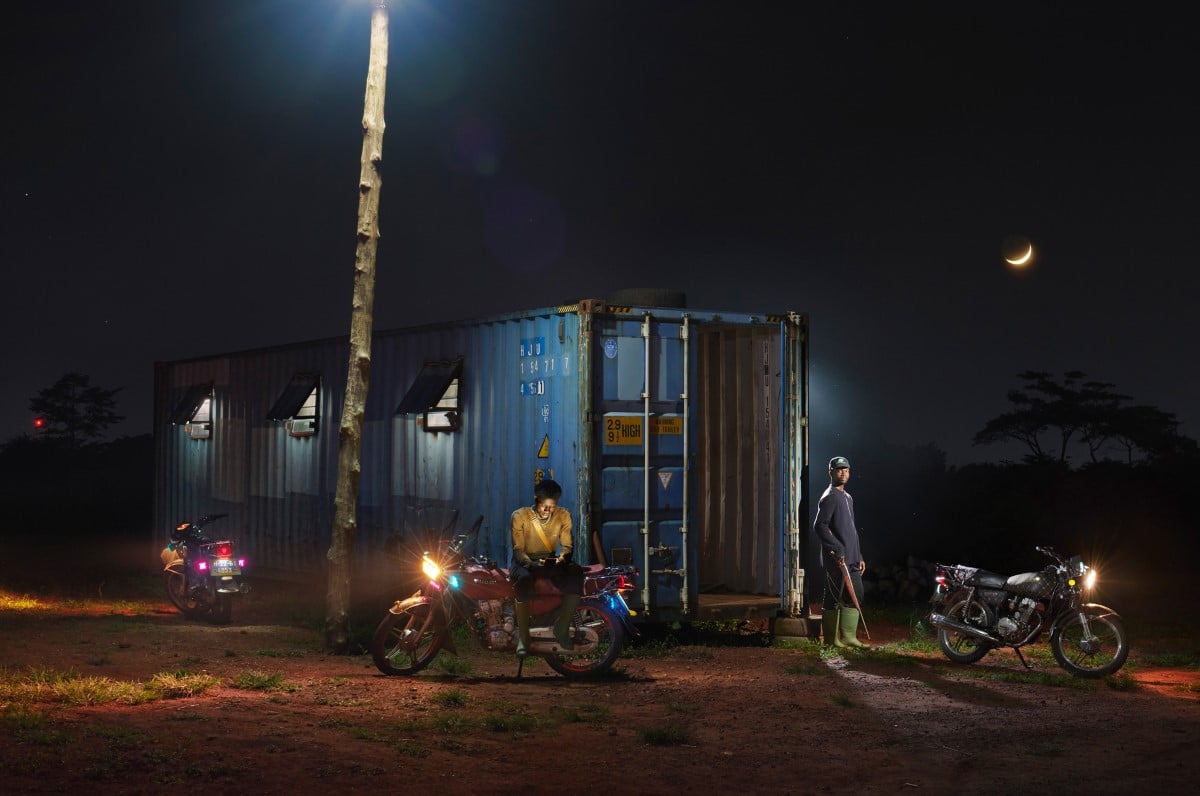
“Evans & Charles” by George McLeod (Nkoranza, Ghana). Finalist.“Part of an ongoing project documenting the local community revolving around corn farming and production. I spent two weeks there and took one photo because I wanted to get to know people and develop trust before showing up with my camera, and so this was shot on the last night of the two guys I got to know the best. Evans & Charles. Super nice guys who were up for being in the first image of the project. Evans is the site foreman and Charles is the nighttime security guard, I wanted to pose them, but exactly as I’d seen them many times. I may have moved the motorbikes for a better composition, too.”
Its a photo of history, where puppets and people blur the line between reality and representation.
Each figure, whether carved or flesh, weaves a thread in Afghanistans narrative.
The Car Boys by Rebecca Moseman (Carrowbrowne Halting Site, Galway, Ireland).
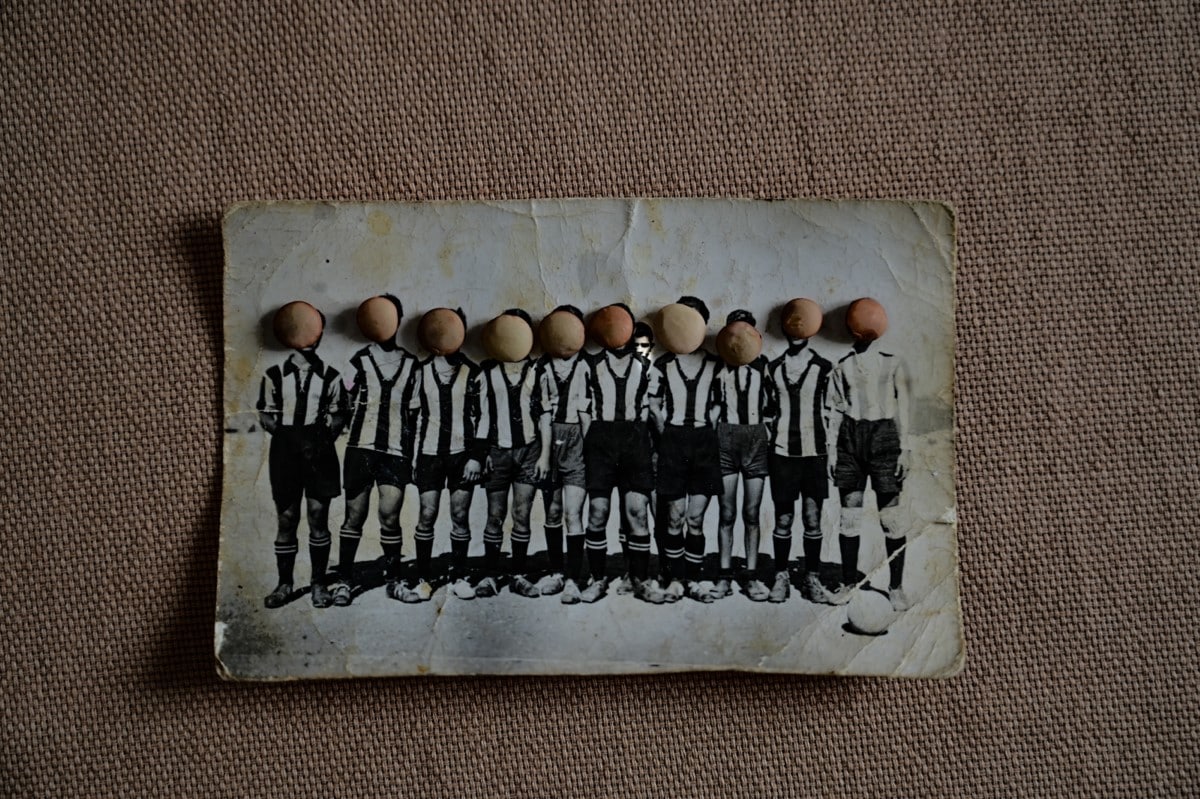
“Untitled 1” by Afroditi Diamantopoulou. Finalist.“The photo series titled “(No) Stories to Be Told” delves into my inner journey from the present to the past. It forms a discourse with my private family collection, both literally and symbolically, as the individuals portrayed in the images are part of my family, extended relatives, and friends. By manipulating these photographs and aligning them with the present moment, I endeavor to unravel their characters, narratives, and roles. Through this process, I strive to recreate the past, evaluate their behavior, and redefine my role within the family dynamic and the history.”
Finalist.Billy, Steven, and Paddy, three Irish Traveler.
Boys use an abandoned car as their playground.
Although the site was intended to be temporary, it has become their permanent living area.
This series of images reflects my personal interactions with the Travelers I was fortunate to connect with.
The Mundari and their treasured cows.
by France Leclerc (South Sudan).
Finalist.Indigenous to the Nile Valley, the Mundari is a small ethnic group of roughly 100,000 people.
And the cows are magnificent.
These Ankole-Watusi cows are gigantic and have impressive curly horns.
Stilt fishermen of Weligama by Andrea Peruzzi (Weligama, Sri Lanka).
The pursuit of water by Eliane Band (Gujarat, India).
Nameless1 by Hossein Fardinfard (Tskaltubo, Georgia).
Finalist.From the series Blackout.
Merry is one of the victims of the 1992 war in Abkhazia.
Her brother and her 53-year-old husband were both murdered by Abkhazian separatist forces.
With an injured leg, she escaped and hid in a forest for two weeks.
After a long journey, she reached her new home in Tskaltubo.
Personally, Merry and this photo symbolize hope for me.
Evans & Charles by George McLeod (Nkoranza, Ghana).
Finalist.Part of an ongoing project documenting the local community revolving around corn farming and production.
Super nice guys who were up for being in the first image of the project.
I may have moved the motorbikes for a better composition, too.
Untitled 1 by Afroditi Diamantopoulou.